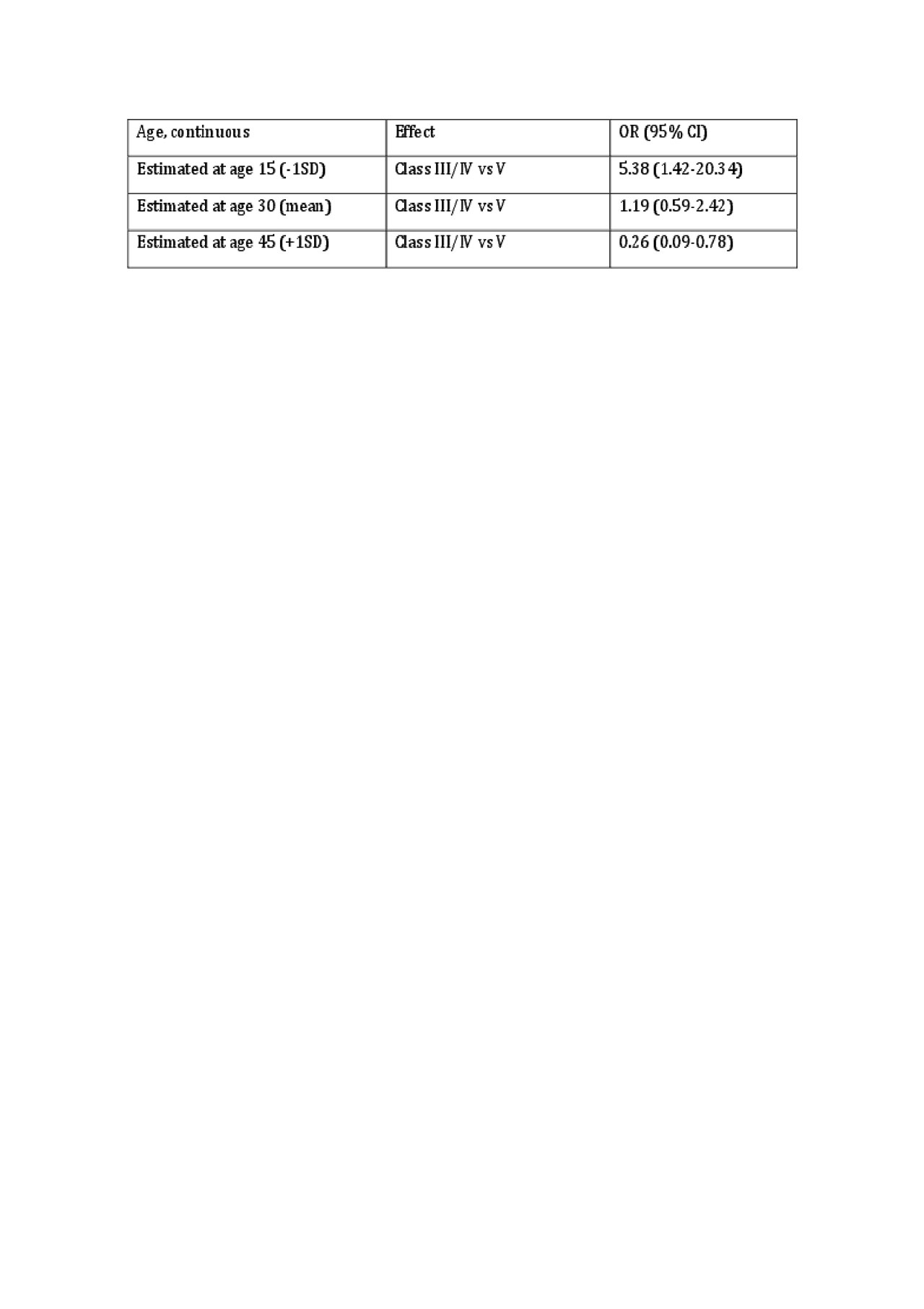Session Information
Session Type: Poster Session (Monday)
Session Time: 9:00AM-11:00AM
Background/Purpose: Systemic lupus erythematosus (SLE) is a systemic autoimmune disease that is associated with an increased incidence of venous thromboembolism (VTE). Lupus nephritis (LN) has been shown to be an independent risk factor for VTE. To our knowledge the risk of VTE has not been studied by International Society of Nephrology/Renal Pathology Society (ISN/RPS) LN class.
Methods: A cross-sectional analysis was performed using data from the Glomerular Disease Collaborative Network (GDCN). Patients with class V LN were compared to those with class III or IV (but not associated class V) LN. Classes I, II and VI were excluded from analysis due to their low prevalence. The outcome of interest was image-confirmed VTE. Logistic regression was used to calculate odds ratios and 95% confidence intervals, adjusted for age, sex, race, hormonal contraception use, serum albumin and use of hydroxychloroquine. Effect modification was assessed between the main effect and other covariates and considered if p< 0.05.
Results: Our cohort consisted of 533 patients; 311 (58.3%) with class III/IV and 222 (41.7%) with class V LN. Mean±SD age was 30.9±15.0 years (range 6-79 years), with an overall incidence of image-confirmed VTE of 54/533 (10.1%). In adjusted analyses, the odds of VTE were not significantly different for those with class III/IV compared to class V LN (OR, 95% CI: 1.00, 0.54-1.84). There was, however, evidence of effect modification of LN class on VTE by age at biopsy, as displayed in table 1.
Conclusion: VTE was common in LN patients in the GDCN, occurring in ~10%, and its incidence was similar among patients with class III/IV LN and those with class V LN. These findings suggest that the association between LN and VTE is not limited to class V-related nephrotic syndrome. Interestingly, however, age-specific analysis demonstrated increased odds of VTE with class III/IV LN diagnosed at a younger age and decreased odds ratio for VTE with class III/IV LN diagnosed at an older age. This may suggest the presence of an age-sensitive modulation of LN class-specific VTE risk.
To cite this abstract in AMA style:
Cooley I, Derebail V, Gibson K, Alvarez C, Poulton C, Blazek L, Love A, Hogan S, Falk R, Sheikh S. The Association of Lupus Nephritis Histopathologic Classification with Venous Thromboembolism Is Modified by Age at Biopsy [abstract]. Arthritis Rheumatol. 2019; 71 (suppl 10). https://acrabstracts.org/abstract/the-association-of-lupus-nephritis-histopathologic-classification-with-venous-thromboembolism-is-modified-by-age-at-biopsy/. Accessed .« Back to 2019 ACR/ARP Annual Meeting
ACR Meeting Abstracts - https://acrabstracts.org/abstract/the-association-of-lupus-nephritis-histopathologic-classification-with-venous-thromboembolism-is-modified-by-age-at-biopsy/

